Exploring the Oculus Museum in NYC: A Multifaceted Cultural Experience
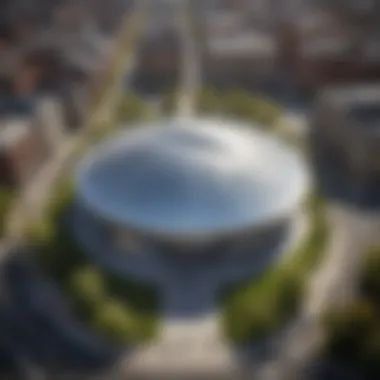
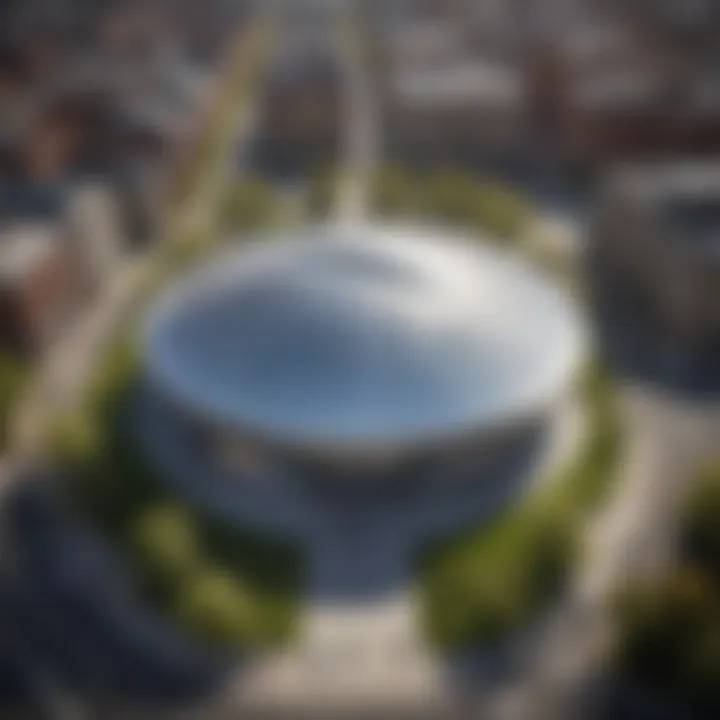
Intro
The Oculus Museum in New York City stands as a testament to modern architectural innovation and cultural enrichment. Nestled remarkably at the World Trade Center site, this unique destination not only showcases art and design but also invites visitors into a rich immersive experience. This article will dissect the multifaceted aspects of the Oculus, examining its architectural grandeur, diverse exhibits, and the profound impact it has on the urban landscape of New York City.
With a focus on those who appreciate the confluence of architecture, art, and cultural history, the insights drawn here aim to clarify why the Oculus Museum deserves a prominent place in your travel itinerary. The structure, infused with significant history, serves as a gateway to understanding the artistic endeavors that flourish within its expansive premises.
Exquisite Architectural Designs
Unique Home Features
The Oculus Museum captivates with its design, drawing admiration from architects and visitors alike. Designed by Santiago Calatrava, the building exhibits a skeleton-like structure that resembles a dove taking flight. This symbolism speaks to hope and renewal, a poignant reminder of New York's resilience. Visitors are greeted by an expansive atrium that blends natural light and open space, compelling them to explore its various cultural exhibits.
The combination of sleek white ribs and a glazed roof creates a striking visual experience. The central hall, often filled with light, enhances the feel of openness that the architect envisioned. The clever use of space reflects contemporary architectural trends that prioritize minimalism and functionality without sacrificing aesthetics.
Historical Significance
In understanding the Oculus, one must acknowledge its historical backdrop. This site is entwined with the events of September 11, 2001, serving as a pivotal location in New York’s narrative. The design evokes reflections on memory and commemoration, merging the past's somberness with a forward-looking approach.
The construction of the Oculus was initiated as part of the broader redevelopment of the World Trade Center area. It aims to symbolize rebirth and strength, connecting the tributes to the past with a vibrant, bustling present. It acts not just as a museum, but as a public space that reflects the spirit of resilience intrinsic to New Yorkers.
"The Oculus is more than a museum; it's a monument to hope, reflecting both grief and renewal."
Closure
The Oculus Museum stands as a major attraction for real estate enthusiasts, travelers, and those with an eye for interior design. Its architectural designs and historical significance contribute to the cultural fabric of New York City. Understanding the intricacies of its construction and exhibitions provides a richer experience for visitors, inviting deeper reflection on the intertwined narratives of architecture and history.
Prelude to the Oculus Museum
The Oculus Museum distinguishes itself as a unique cultural venue in New York City. It offers visitors a glimpse into the fusion of art and architecture, creating an invitation for exploration and reflection. This section will serve as a foundational understanding of the Oculus Museum, illustrating its significance in the broader context of cultural institutions.
Defining the Oculus Museum
The Oculus Museum is not merely an exhibition space; it is a dynamic cultural hub. Located at the World Trade Center, this museum stands out for its architectural prowess and modern design. It is an integral part of the Oculus transportation hub itself, designed by architect Santiago Calatrava. The name "Oculus" originates from the circular opening at the apex of the structure, symbolizing a dove taking flight. This museum's purpose is to showcase various art forms while providing an accessible setting for public engagement. Its design encourages foot traffic and serves as a meeting point for locals and tourists alike. By encompassing various artistic displays, the Oculus Museum appeals to a broad audience, thus fulfilling its role as a multifaceted institution.
Historical Context
Understanding the history of the Oculus Museum enhances its cultural relevance. The site where the museum now stands has a tumultuous past, being located at the heart of the events that unfolded on September 11, 2001. In the years following the tragedy, revitalization efforts focused on emotional healing and architectural innovation. The construction of the Oculus and the museum began in the early 2010s, aiming to symbolize hope and renewal. This context enriches the visitor experience, as attendees can appreciate not only the modern showcases but also the historical narrative of resilience behind the structure. The museum acts as a bridge connecting the past and present, making it an essential destination for those interested in both art and history.
Architectural Significance of the Oculus
The Oculus serves not just as an architectural triumph but also as a pivotal monument within New York City. Its significance lies in how it redefines the relationship between structure and space in an urban environment. This section delves into the essential elements that contribute to the Oculus's architectural importance, discussing its inspirations, materials, and overall impact on the city's skyline.
Design Inspiration
The design of the Oculus is inspired by the concept of a bird in flight. This vision emerges from architect Santiago Calatrava’s aspiration to create a space that symbolizes hope and renewal. The fluid lines and organic forms of the structure aim to foster a sense of freedom and expansiveness, contrasting with the rigidity of surrounding buildings. This fusion of natural inspiration with modern engineering reflects a new direction in architectural design.
Calatrava’s artistic philosophy emphasizes harmony between architecture and nature. The prominent use of light in the Oculus effectively communicates this philosophy. Large expanses of glass allow sunlight to flood the interior, creating an atmosphere that feels both welcoming and uplifting. Additionally, the open-concept layout invites visitors to explore each level without feeling confined. This decision enhances visitor experiences, providing a seamless blend of art and architecture.
Materials and Construction

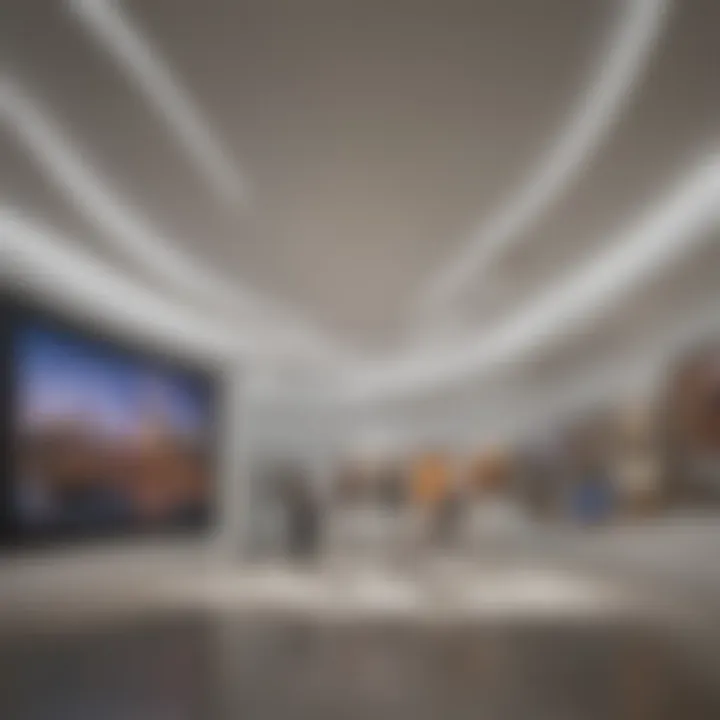
The construction of the Oculus utilized a mix of advanced materials, highlighting its innovative design. The predominant use of concrete and steel contributes to its structural integrity while allowing for the bold shapes synonymous with Calatrava’s work. The roof, framed with approximately 100 white ribs, illustrates both aesthetics and functionality, as it shelters the urban transport hub below.
The glass elements play a crucial role too. By integrating glass into the design, the Oculus minimizes barriers between the indoors and outdoors, fostering a interactive experience both for visitors and passersby. This transparency helps in connecting the museum with its vibrant Manhattan surroundings, creating an inviting space that draws in foot traffic.
The construction process was complex, requiring precision and expertise. Building a structure of such scale and design integrity posed numerous challenges. However, each construction phase was carefully planned to ensure sustainability and longevity, allowing the Oculus to stand as a modern beacon in New York City.
Impact on the Skyline
The impact of the Oculus on the New York City skyline is palpable. Its striking silhouette cuts against the urban landscape, making it a landmark sight. The architecture creates a focal point that attracts locals and tourists alike. This rejuvenation of the area has transformed the Oculus from mere transit terminal to a cultural icon.
Not only does it signify modern architecture, the Oculus also symbolizes resilience and rebirth following the events of September 11, 2001. As part of the larger World Trade Center complex redevelopment, it stands as a testament to progress. By incorporating art, commerce, and openness, the Oculus enriches the skyline.
The Oculus not only represents architectural innovation; it is also a vital part of New York's ongoing narrative of healing and transformation.
Through its design inspiration, use of materials, and profound impact on the skyline, the Oculus Museum is a significant architectural achievement. It enhances the cultural tapestry of New York City while fostering a unique experience for every visitor.
The Exhibits Within the Oculus Museum
The exhibits within the Oculus Museum serve as a cornerstone for understanding the multifaceted cultural experience it offers. They provide a unique lens through which visitors can engage with both contemporary art and the historical narratives of the space. Delving into specific elements of these exhibits reveals their deeper significance. Visitors find themselves immersed in artistic expressions that resonate with various aspects of modern life. Furthermore, the careful curation reflects societal themes and encourages dialogue among attendees.
Permanent Installations
The permanent installations at the Oculus Museum is a testament to the museum's commitment to showcasing pioneering artworks. These works are not just random pieces; they are thoughtfully selected to create an ongoing conversation with the audience. The installations often include works by influential artists and feature a blend of different mediums, from sculpture to multimedia art.
A notable aspect of the permanent collection is its ability to reflect the evolving identity of New York City. For example, a prominent installation might tackle themes of urban life, diversity, or resilience. By providing a stable point of reference for visitors, these installations contribute to the overall narrative of the museum and enhance the understanding of the collections.
Temporary Exhibitions
Temporary exhibitions at the Oculus Museum draw significant attention from both locals and tourists alike. These rotating exhibits allow the museum to remain dynamic and responsive to current trends in the art world. Each exhibition showcases artworks that might not be part of the permanent collection, offering fresh perspectives and experiences for visitors with each visit.
Artists from various backgrounds often feature in these temporary displays, promoting inclusivity and creativity. Attending these exhibitions not only allows visitors to see innovative works but also provides a platform for lesser-known artists. This focus on diversity enriches the artistic landscape and connects the audience to the broader contemporary art community.
Focus on Modern Art
The focus on modern art within the Oculus Museum encapsulates the spirit of contemporary creativity. This emphasis is evident in both the permanent installations and temporary exhibitions, where the museum seeks to challenge traditional boundaries and explore new artistic horizons.
Modern art's fluid nature allows for various interpretations, and the museum is committed to fostering critical engagement among its visitors. Themes related to technology, identity, and social issues often emerge, reflecting a society in transition. By embracing modern art, the Oculus Museum not only enhances its appeal but also positions itself as a vital player in the cultural dialogue of the art world.
"The art of today is not merely a reflection of society; it is a catalyst for change and understanding."
In summary, the exhibits within the Oculus Museum accentuate its role as a cultural hub. The blend of permanent installations, temporary exhibitions, and a focus on modern art collectively enriches the visitor experience. Whether exploring the enduring narratives or engaging with contemporary creativity, visitors at the museum find themselves immersed in a vibrant dialogue with art.
Cultural Impact of the Oculus Museum
The Oculus Museum holds a significant position in New York City's cultural landscape. Beyond being an architectural marvel, it serves as a vibrant hub for community interactions and artistic expressions. The museum not only showcases art but also fosters connections between artists and the public. It becomes a platform for discussion about contemporary issues while celebrating the diverse cultures within the city. This section delves into the museum's community engagement programs, its collaborations with artists, and educational outreach efforts, all emphasizing its role in enhancing cultural dialogue.
Community Engagement Programs
Community engagement is a core aspect of the Oculus Museum’s mission. The museum regularly organizes various programs designed to involve local residents, art enthusiasts, and students. These programs often include workshops, interactive art sessions, and cultural festivals. Such activities aim to diminish barriers between the art world and the public, making art more accessible.
For instance, these programs promote dialogue around emotional and social topics relevant to the community. They offer a platform for underrepresented voices, bringing attention to issues such as social justice and environmental awareness. Participants often describe these experiences as transformative, allowing them to express themselves in ways they might not have considered before.
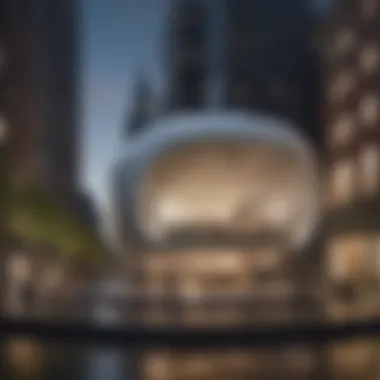
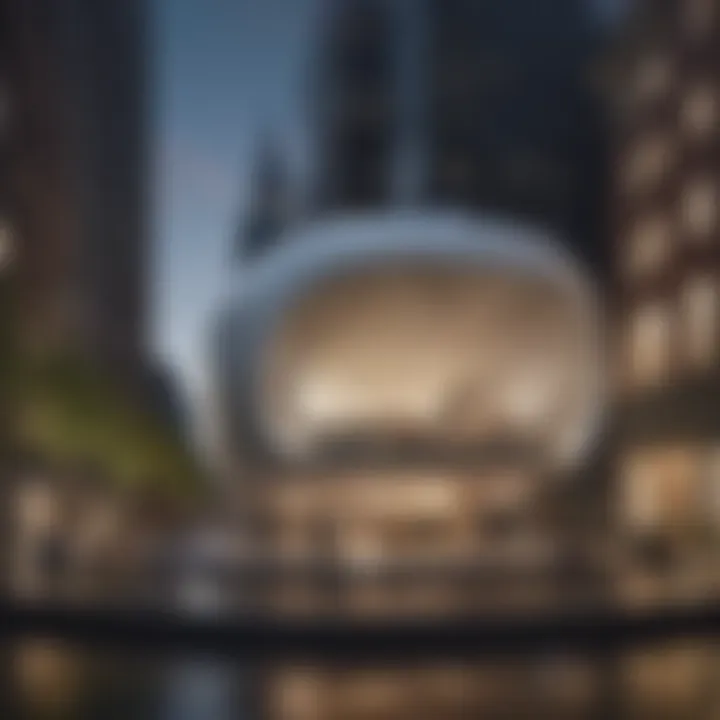
Collaborations with Artists
The collaborations with artists are another key element of the Oculus Museum's cultural impact. The museum acts as a conduit between emerging artists and a wider audience, featuring both established and new talent. These collaborations result in dynamic exhibitions and installations that shift constantly. Artists are invited to contribute work that challenges traditional forms and promotes innovative ways of engaging with the audience.
For example, the museum has hosted exhibitions featuring artists from various backgrounds, each bringing distinct perspectives to their works. This diversity enriches the museum's narrative, pushing boundaries on what art can be and how it can provoke thought. Collaborations often extend beyond visual art to include performances, lectures, and discussions led by the artists themselves, making the experience more immersive.
Educational Outreach
Educational outreach is an essential component of the Oculus Museum's programming. The museum is committed to providing educational opportunities for schools, families, and the wider community. Through guided tours, tailored teaching materials, and partnership with local schools, the museum equips participants with knowledge about art, architecture, and the cultural significances connected to them.
Furthermore, special sessions are often arranged for students to meet artists and gain insight into their creative processes. This initiative not only enhances academic learning but also encourages creativity among youth. The museum recognizes that fostering an early appreciation for the arts can cultivate future generations of artists and art lovers.
"The Oculus Museum not only connects art with the community, but also educates and inspires future cultural stewards."
The combined efforts in community engagement, artistic collaborations, and educational outreach render the Oculus Museum a pivotal institution in New York City. It encourages active participation and cultivates a deep appreciation for culture and the arts among its visitors. By focusing on these aspects, the museum illustrates the vital role that cultural institutions play in shaping social narratives.
Visitor Experience at the Oculus Museum
The visitor experience at the Oculus Museum is paramount in understanding its role as a cultural hub. This aspect encompasses various elements, such as visitor planning, accessibility, and overall feedback. These factors together enhance the museum’s role not just as a place for art but also as a community resource, appealing to diverse interests and backgrounds.
Planning Your Visit
Visiting the Oculus Museum requires some preparation to ensure a fulfilling and enjoyable experience. Here are some key points to consider:
- Location: The museum is situated in Lower Manhattan, easily accessible via public transit. The nearest subway stations are the PATH trains and several MTA lines.
- Hours of Operation: Check the current hours on the museum's website as they may change seasonally. Planning your visit around off-peak hours can provide a more relaxed experience.
- Tickets: It is advisable to purchase tickets in advance, especially for special exhibitions that might attract larger crowds. Some exhibitions may be free, while others might charge a nominal fee.
- Guided Tours: Consider joining a guided tour for deeper insight. These tours often offer more information about the art pieces and the architecture of the Oculus itself.
- Cafés and Facilities: Evaluate the amenities provided such as cafés, restrooms, and seating areas, ensuring a comfortable visit.
Accessibility Features
The Oculus Museum is designed with inclusivity in mind. Several features cater to visitors with varying needs:
- Wheelchair Access: The museum provides wheelchair access throughout. Ramps and elevators are available for easy navigation.
- Service Animals: Service animals are allowed to accompany visitors with disabilities and are supported by the staff.
- Sensory Kits: These kits are available for visitors with sensory sensitivities, helping to make the experience comfortable.
- Guided Assistance: Staff members are trained to assist those who require help due to mobility or other issues.
This commitment to accessibility is commendable and ensures that all visitors can enjoy the cultural experience without barriers.
Visitor Feedback and Reviews
The experience of past visitors can provide valuable insights into what to expect. According to various reviews, the following points often come up:
- Visual Impact: Many visitors express amazement at the stunning architecture of the Oculus, stating it enhances the overall experience.
- Exhibit Variety: Feedback highlights the dynamic range of exhibits, noting that there is something for everyone, regardless of personal taste in art.
- Community Engagement: Visitors appreciate the numerous workshops and events hosted by the museum, which foster community involvement.
- Staff Knowledge: Reviews often commend the staff's expertise and friendliness, making the visit more enjoyable.
"The Oculus not only showcases art but creates an experience that resonates deeply with visitors."
In summary, the visitor experience at the Oculus Museum is crafted through careful planning, accessibility, and responsive feedback. These elements contribute to a unique cultural encounter in New York City.
Integration With the Urban Environment
The Oculus Museum stands as an essential component of New York City's urban landscape. Its design not only emphasizes the building itself but also highlights the importance of urban connectivity. As a cultural institution, the Oculus Museum exemplifies how art and architecture can coexist and enhance everyday life in the city. In understanding its integration, one must consider two main aspects: connectivity to transportation and surrounding attractions.
Connectivity to Transportation

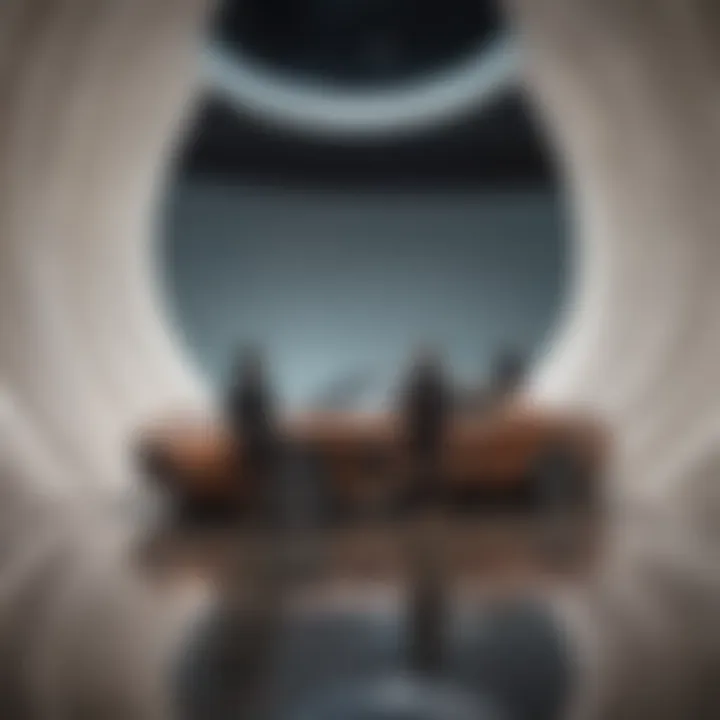
Accessibility is crucial for any cultural destination, and the Oculus Museum excels in this regard. Located at the World Trade Center site, the museum offers a direct connection to multiple transportation options. Visitors can access the PATH trains, the subway, and numerous bus lines. This connectivity makes the museum an attractive hub for both locals and tourists.
The World Trade Center Transportation Hub, designed by architect Santiago Calatrava, is a vital feature. Its sweeping white wings create an inviting atmosphere. The hub not only facilitates movement but also serves as an architectural landmark. By merging transportation with cultural experience, the Oculus encourages spontaneous visits and regular patronage. Visitors from all parts of the city find it easy to include the museum in their itinerary.
Surrounding Attractions
In addition to its connectivity, the location of the Oculus Museum benefits from various attractions nearby. These surrounding sites create a vibrant ecosystem that draws diverse crowds.
- 9/11 Memorial and Museum: A short walk away, it offers a profound reflection on history and loss.
- Brookfield Place: A destination for shopping and dining, enhancing the visitor's experience.
- Battery Park: A green space that provides a contrast to the urban setting, ideal for a leisurely stroll.
The combination of the Oculus Museum with these attractions forms a comprehensive cultural experience. Visitors can enjoy a day filled with art, history, and leisure, making the Oculus an integral part of their exploration.
This integration with the urban environment not only enriches the visitor experience but also fosters a sense of community around the museum.
The Oculus Museum, with its strategic location and surrounding attractions, becomes more than just a place to view art. It signifies a meeting point of culture and urban life, drawing people from all walks of life into a shared experience.
Future Prospects for the Oculus Museum
The future of the Oculus Museum holds significant importance in the realm of cultural institutions. This section aims to explore upcoming trends and opportunities that can shape the museum's trajectory over the next few years. The museum's ability to adapt and evolve will be paramount in maintaining its relevance amid changing cultural landscapes.
One critical aspect is the introduction of upcoming exhibitions that promise to enhance the visitor experience. These exhibitions will not only draw in art enthusiasts and casual visitors alike but also provoke thought on contemporary issues, solidifying the museum’s role as a hub of culture and creativity.
Upcoming Exhibitions
The Oculus Museum plans to host a variety of exhibitions in the near future. Curators are actively working on themes that resonate with current societal dialogues. These future exhibitions may include:
- Technological Integration: Showcasing art created with virtual reality and artificial intelligence.
- Environmental Awareness: Exhibits focused on climate change and sustainability through various art forms.
- Cultural Retrospectives: Featuring artists from historically underrepresented communities, providing a platform for their narratives.
These carefully curated exhibitions aim to attract wider audiences and deepen the engagement of visitors. The anticipation surrounding each new exhibition contributes to the museum’s allure, ensuring it remains dynamic and inviting.
Long-term Vision
Looking beyond immediate plans, the long-term vision for the Oculus Museum involves comprehensive strategies to broaden its impact. The administration recognizes the need for sustainable practices to be integrated into its operations. This includes:
- Enhanced Visitor Engagement: Continually improving the visitor experience through interactive and educational programs.
- Community Partnerships: Collaborating with local organizations and schools to foster a stronger community connection.
- Digital Expansion: Increasing online presence through virtual tours and digital collections accessible from the comfort of home.
The Oculus Museum's commitment to innovation and inclusivity will shape its future, ensuring it inspires the next generation.
In summary, the Oculus Museum is set on an exciting path. By engaging with contemporary issues through upcoming exhibitions and fostering a long-term vision that prioritizes community and sustainability, it will remain a significant cultural institution in New York City.
The End
The conclusion of this article serves as a vital reflection on the analysis and insights provided about the Oculus Museum. It synthesizes the key themes and emphasizes the importance of understanding this unique cultural institution.
Summary of Key Points
In summarizing the key points, we first recognize the architectural significance of the Oculus. The design, inspired by the concepts of light and openness, creates a striking visual element within the New York City skyline. This building is not merely a transport hub but a hub of experience that bridges art and history.
The exhibits displayed within the museum, ranging from permanent installations to temporary exhibitions, contribute to a rich narrative that connects the past, present, and future of art. Furthermore, the cultural impact cannot be understated. Community engagement programs and collaborations with artists ensure that it remains dynamic and accessible.
The visitor experience is thoughtfully designed. Planning your visit is made simple with clear information on accessibility features and feedback from past visitors.
Final Thoughts on the Oculus Museum
"The Oculus Museum stands as a testament to the convergence of art, community, and urban living."
The future of the Oculus looks promising with upcoming exhibitions and events that will continue to attract diverse audiences and foster creativity. Visiting the Oculus is not just an exploration of art, but an engagement with the spirit of New York City itself.















